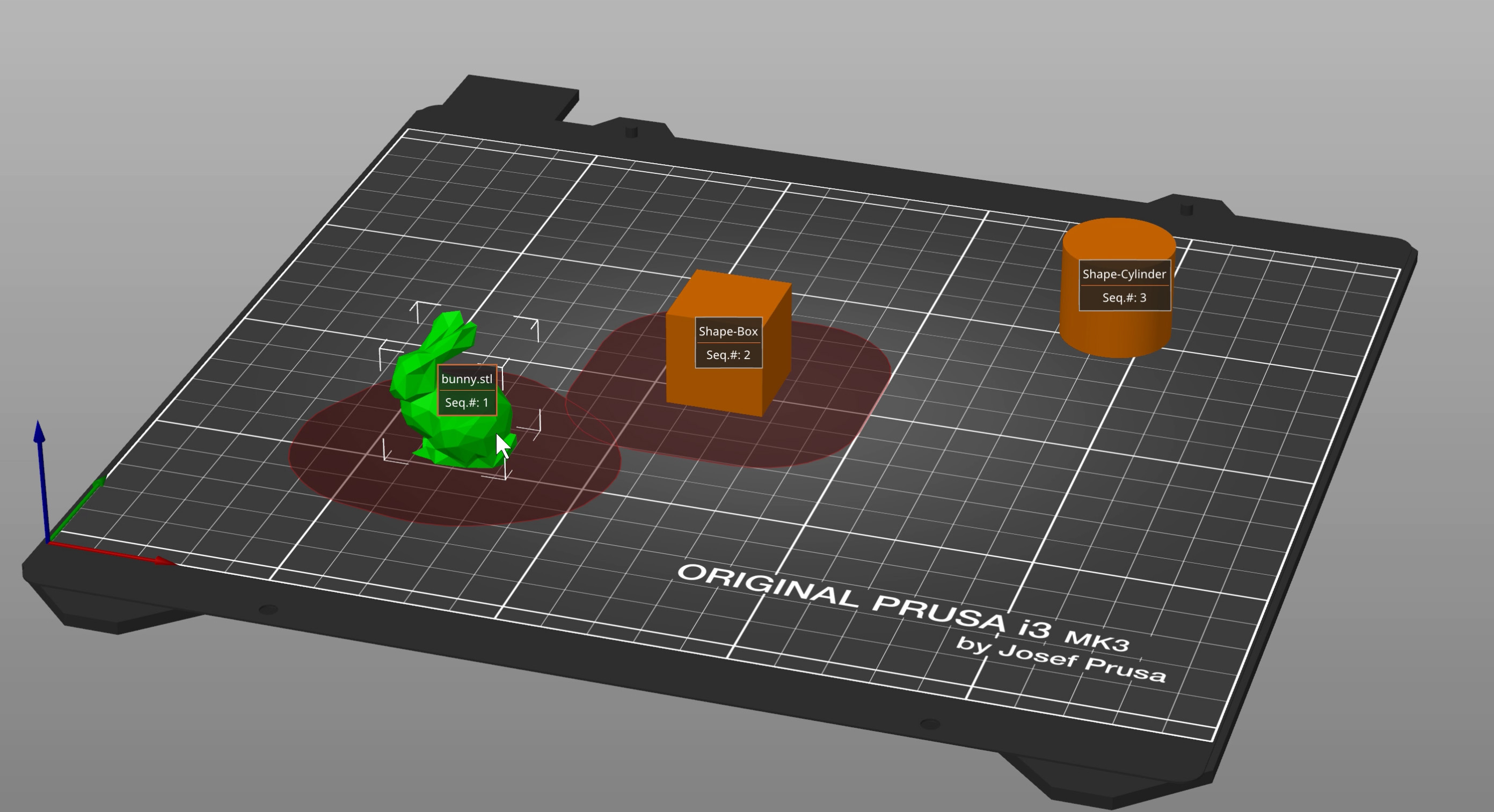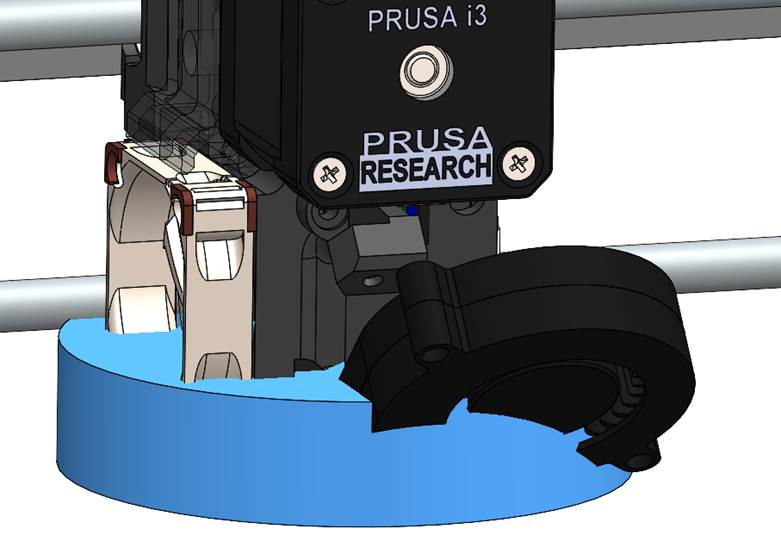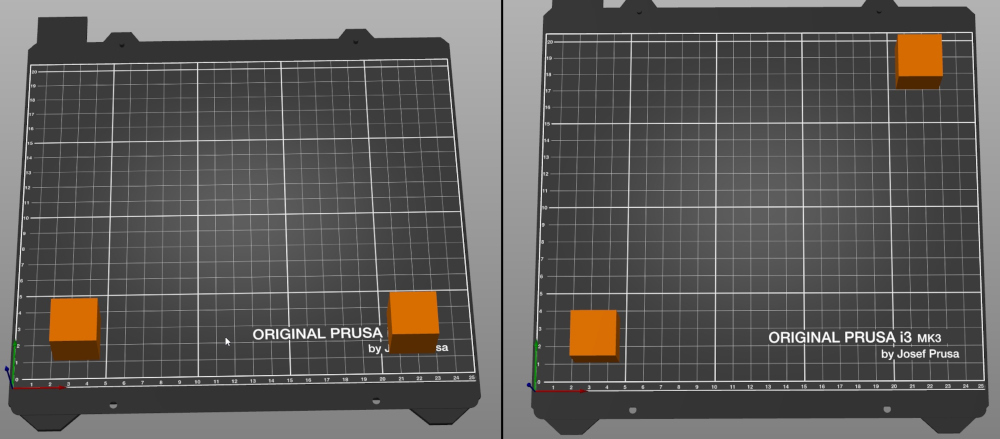Katana Slicer - Print Settings
Sequential Printing
When printing multiple objects at once, you can choose to finish them sequentially, one at a time. This can minimize oozing and strings running between the prints. It can also prevent losing multiple half-finished prints if one of the objects detaches from the print bed.
You can turn this feature on by enabling Print settings – Output options – Complete individual objects.

Press the E key to see the order of objects in the 3D view.
You can change the order by dragging and dropping objects in the Object list. The top-most object in the Object list will be printed first, and the bottom-most last.
You’ll have to check on the printer regularly, with every object there is a chance that the specific part won’t stick to the print bed.
Collisions
With sequential printing, there is a possibility of collisions between the print head and one of the finished prints or between the X-axis and one of the finished prints. Katana Slicer will try to warn of such cases, but even if you get no warning, you should try to avoid possible collisions as much as possible.
Print objects from front to back, from left to right, and from lowest to tallest part
to minimize the chance of collision with the extruder and the X-axis.
If Katana Slicer detects a collision, it will visualize it with a red highlight of the overlapping regions.

To help Katana Slicer detect collisions, specify the Extruder clearance settings.
Radius
The radius of the cylindrical clearance around the extruder.
Height
The vertical distance between the tip of the nozzle and the X-axis rods (or the lowest part which may interfere with a finished print).
Katana Slicer wants all objects to be below the extruder clearance height except for the last object, which can be as tall as the printer’s max Z.

Visual representation of the default parameter, creating a keep-out zone of 45mm radius and 20mm height around the nozzle (thanks to David Renaud)
The collision detection logic is pretty basic and will sometimes prevent you from Exporting printable G-code. It’s up to you to take responsibility and increase the height tolerance.
Example
Height clearance is 20mm.
The object is 25mm tall.
Objects can be printed sequentially, but the current collision logic does not distinguish between the left scenario (not printable, collision with the X-axis rod), and the right scenario (printable). So you have to change the value manually (height clearance).

*Thank you to Prusa3D for providing the content used in this post.
